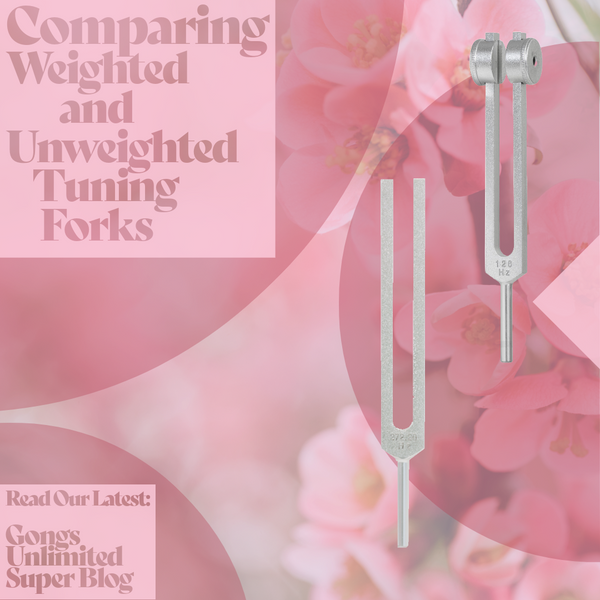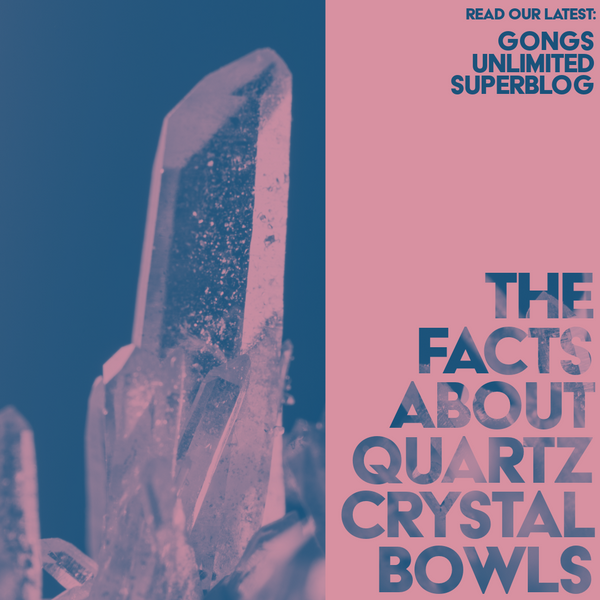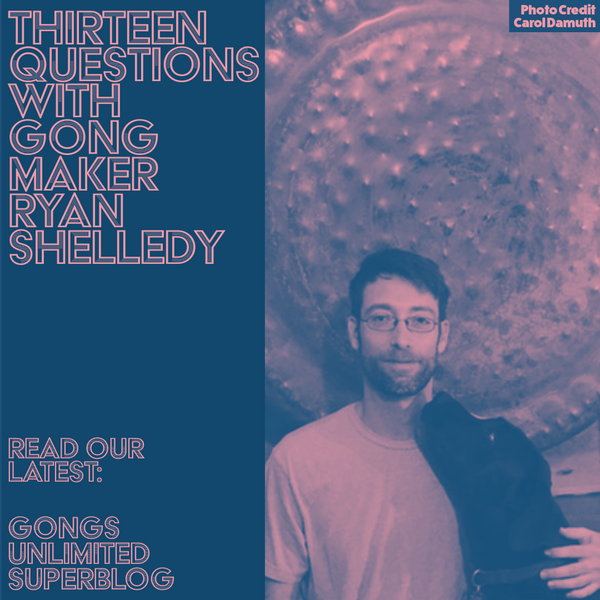The Cosmic Octave: Energy, Information, and Qualities (Part 2)
This blog series draws from the work and calculations discovered and laid out by Hans Cousto in his seminal 1978 tome "The Cosmic Octave." If you find the info below to be resonant with you, we highly encourage you to purchase his book wherever you can find it...
Here's a fast link if you can't wait: The Cosmic Octave by Hans Cousto

Merci beaucoup, Hans Cousto!
In our first post in this blog series, I introduced the concept of the Cosmic Octave. I talked a little about the Law of the Octaves, exploring harmonics and other musical relationships.
Like many of you gongists out there, I am not a classically trained musician. I have written, recorded, and performed music for over 20 years, but I am self-taught, playing mostly by ear. I admit that I often struggle to meet my ear-trained abilities with the harder math and science of music theory. It can be intimidating to try to grasp some of it, but I'm always learning. And when you suddenly understand a concept and put it into practice, the reward is priceless.
Each of our blog series is a part of that learning journey for myself, for Gongs Unlimited, and for inquiring gong users like you. We get a lot of questions from you all, our wide-ranging field of gong lovers and music players. When we're planning upcoming blogs, we take your questions into consideration.
To that end, this series on the Cosmic Octave is an attempt to understand, distill, and explain Hans Cousto's work as it relates to a spiritual and energetic approach to gongs and music.
Energy, Information & Qualities
So what do we mean when we talk about Energy? What are we talking about when we speak in terms of Spirit? What "power" lies in a Mercury Gong or Sun Gong?
The answer to this could maybe be best described by asking someone to describe the color Red.
They might say that the color red refers to light in the visible spectrum, that red light has an average wavelength of 620 to 750 nanometers. They might also say that it has a frequency range of 400 to 484 THz.
The info above is all what you would call "quantitative data" or information which can be quantified or measured by numbered units. Light is a type of energy made of a hybrid of waves and particles, and that energy can be measured and quantified into numerical data and information or "quanta."
But that's not the whole story of red, is it? If you were speaking to someone who had never seen or experienced Red before, it may be meaningless to them to know that the color red occurs within that wavelength and frequency range. What about the experience of Red?
What does it feel like to perceive "Redness"? How does "Red" taste? What does it smell like? What kind of emotions are brought up by the color Red? What types of memories are recalled? What does Redness feel like? What is the experience of Redness?
Maybe the color Red brings to mind strawberries: the sweet, fruity aroma, the distinct, juicy flavor of biting on a fresh berry off the vine.
Or maybe it brings up thoughts or feelings of passion, love, and romance. Maybe it makes you angry, anxious, and brings to mind violence and war? Maybe it tells you "proceed with caution." Some of these things depend on the culture you were raised in, or even the environment you grew up in. In China, the color Red is associated with happiness and prosperity. In India, it represents purity.
These are the Qualities of Red. These characteristics are Qualitative data or "qualia." This refers to information which can't be measured or quantified with numbers. Instead, this kind of information must be perceived and described, through subjective experience. Some qualities are universal, others are cultural, familial, or personal. The qualities of a thing may shift or evolve over millennia, centuries, or decades.
The same is true with "Red" as is true of other archetypal symbols and images. While instances of the physical color of Red exist as a phenomenon in nature, the experience of "Redness" exists on a virtual, mental, emotional, spiritual, or symbolic level. It can only be described by someone who has experienced the phenomenon of Red, and different people may experience and describe it differently.
Some archetypes and symbols are ancient and derived from naturally occurring images found in the world. They may seem universal to us (the Mother, the Lake, the River, the Moon, Death, the Sun, Redness, Blueness, the Mountain, the Devil). Cultures and groups through history charged these symbols and images with meaning, intention, and belief, backed by emotion, imagination, and spirit.

When we talk about Mercury, for example, we may look at the ways it can be measured and quantified in hard, physical information: What is the chemical makeup of the planet? How large is it? How dense? How long does it take for it to make one revolution around the Sun? How long is a day on Mercury? We can even convert these periods from days per year into cycles per second (Hz) and use the Law of Octaves to find out the upper Octave counterpart of a given planet (as Hans Cuosto has done). We can take that hard, quantifiable information and understand what frequencies have a harmonic relationship to each planet's periodic frequency. This is all quantifiable, measurable information, energy understood as hard numbers. In this way, you could say we're talking about "Quantitative Energy" or "Quantitative Data".
So what about the qualities of Mercury, the planet? What about the "Qualitative Energy"? In other words, "What's the vibe" when it comes to Mercury? When we talk about Energy, when we talk about the Mercury Gong in terms of sound therapy and intention, and when we talk about Mercury as it relates to the 5th Chakra, we're talking about the Qualities of Mercury.
Mercury–as an archetypal, mythological figure–typically represents themes of communication, perception, quick thinking, commerce, sibling-hood, friendship, short journeys. In astrology, Mercury rules over the sign of Gemini, the Twins. In tarot, it can be associated with The Fool and The Lovers. It's associated with the 5th Chakra and channels of expression.
When ancient astronomers looked to the stars and saw some bodies moving more rapidly than the constellations and stars in the background, they looked at them as gods or spiritual entities. They identified them with the gods of their pantheon based on their Qualities. Mercury, for example, was fast-moving and quickly-changing (with its three to four retrograde periods every year), and so it was named accordingly by the Romans (or Nabu by the Babylonians, or Hermes by the Greeks).
So here we have the physical planet, Mercury, which can be measured in quantifiable ways, with all of its measurements, components, and information converted into hard, numerical data. And then we also have the Spiritual Energy of the Planet Mercury, seen in the mythology of the god Mercury and the archetypal qualities associated with that symbol.
We have the scientific information and data, describing Mercury, the rock orbiting the sun. And then we have the emotive, archetypal, qualitative descriptions of Mercury, the symbol. And while there are other cultures which have different names for their god of communication with slight variations in their characteristics, most mythologies have a god of communication which shares many qualities with Mercury.
Talking about the Mercury Gong through the lens of the Cosmic Octave, when we say that it is great for sound therapists and spiritual healers working on the 5th chakra, or when we say that it is great for communication issues, we don't mean to suggest that it can heal physical throat ailments with a magical laser of energy like some sort of Harry Potter fantasy. What we're talking about is healing the spirit on that energetic, qualitative level.
We might be working with someone who doesn't speak up, or fears expressing their needs. We might be talking about someone who has lost their connection to their artistic self-expression, or someone who seeks to empower themselves by communicating in new ways. These are people who are seeking to heal the expressive and communicative aspect of their spirit, to find their voice by working with sound, intention, and archetypal spiritual symbols to reopen their connection and to find that missing piece of spirit.
With the Cosmic Octave, we are working with both quantitative (vibrational frequency, wavelength, volume) energy AND qualitative energy (the "Spirit of Mercury", 5th Chakra, Connection and Communication, etc.) tied together by the work of Hans Cousto and by the intention of the healer and listener, to heal on a spiritual and emotional level. It is a mixture of practical and spiritual principles, a sort of energetic ladder between "as above" and "so below."
Moving on this ladder from the quantitative level–the planetary periodic frequencies and their upper octaves–we can climb the rungs, deriving qualitative meaning from the symbols attached to these planets, which–when combined with intention–allowing us to work from both a grounded, musical perspective, as well as a spiritual, magical perspective. If one of these two approaches doesn't resonate with you, we invite you to ignore the other. There is power in either approach, as well as power in working with both approaches.
We continue this series with Part 3, looking at the planetary orbits, their frequencies, and the math that gets us from slow moving planet to audible sound.
Also in Gongs Unlimited Super Blog

What's the Difference Between Weighted and Unweighted Tuning Forks?
Tuning Forks are a great way to bring new sounds to your meditations and healings. But what's the difference between Weighted and Unweighted Tuning Forks? What are the best ways to use each? We've got some answers to help you make your decision!

Everything You Didn't Know but Wish You Knew About Quartz and Frosted Crystal Bowls

Thirteen Questions with Gong Maker Ryan Shelledy of Shelledy Sounds
Ryan Shelledy has been making gongs for over a decade from his hand-built foundry in the Midwest. His amazing creations blur the line between, art, sonic sculpture, percussion, and sound healing tools. He is always innovating and developing beautiful, unique pieces that keep us excited for his next delivery of gongs. Learn more about his work in our recent interview with him!


M H
Author